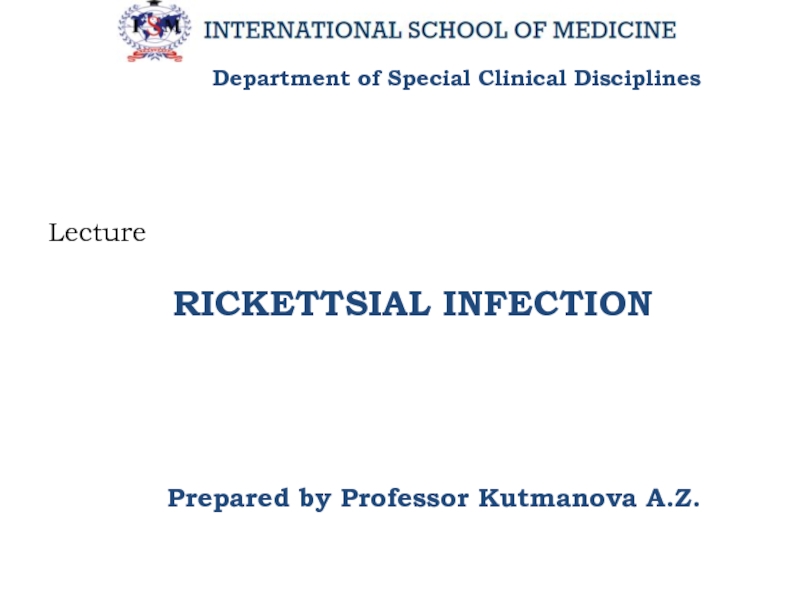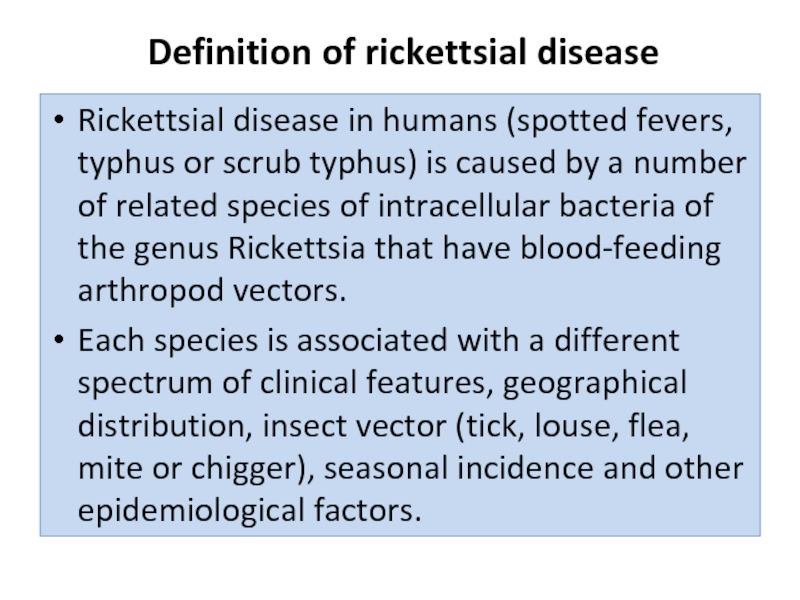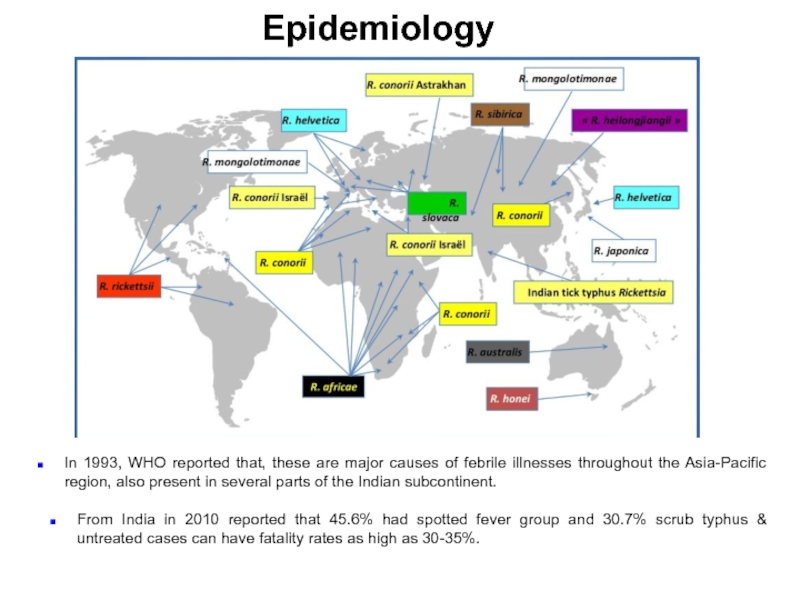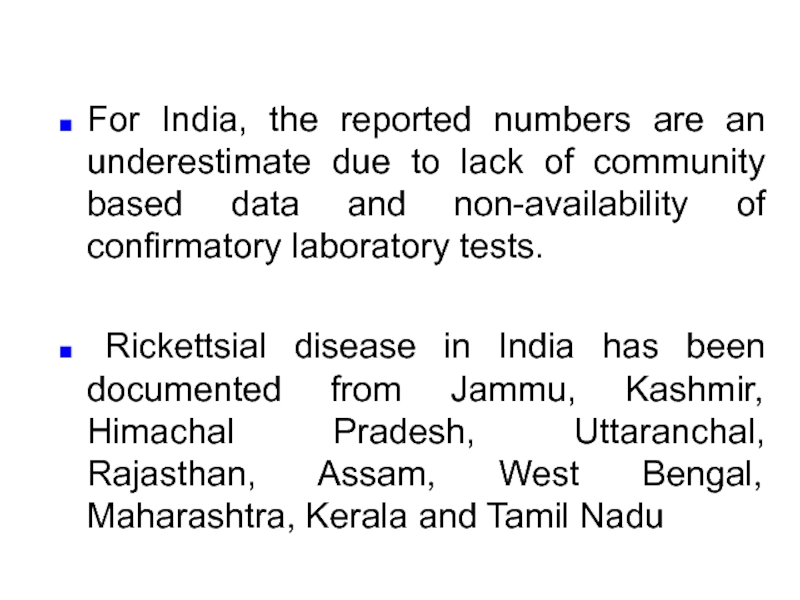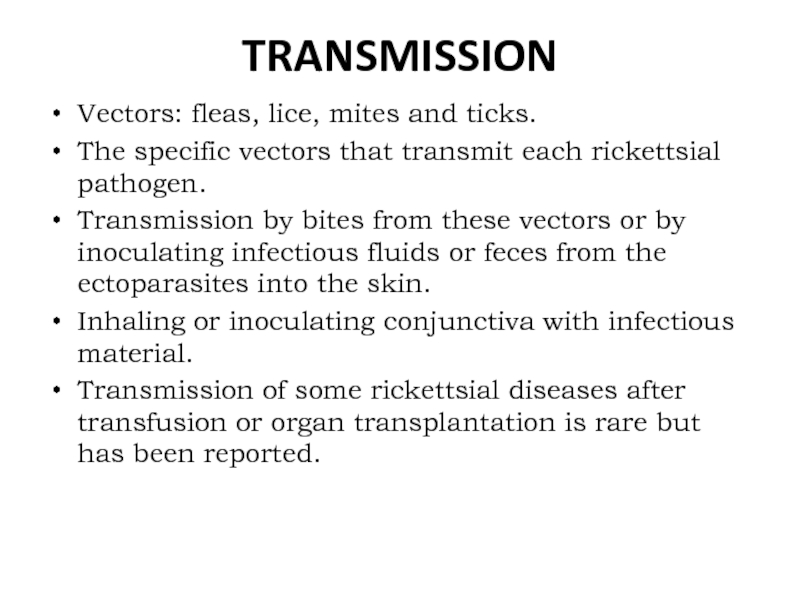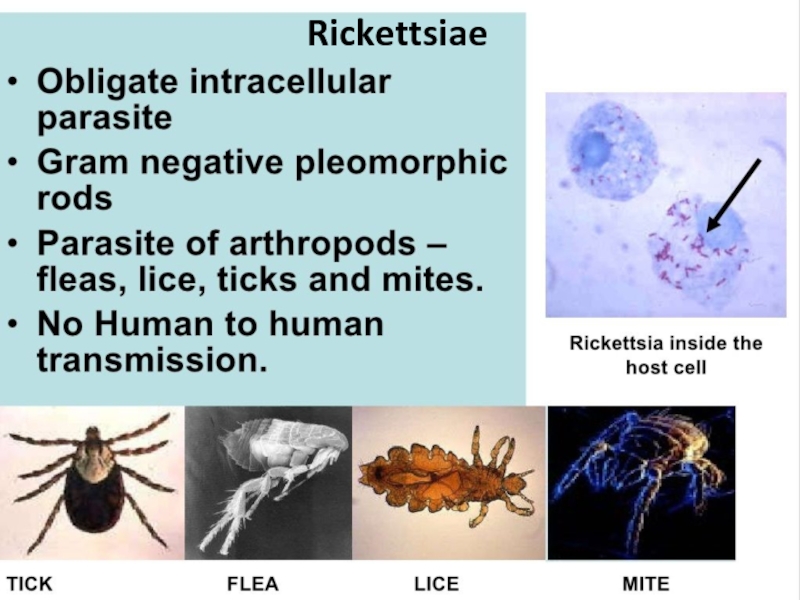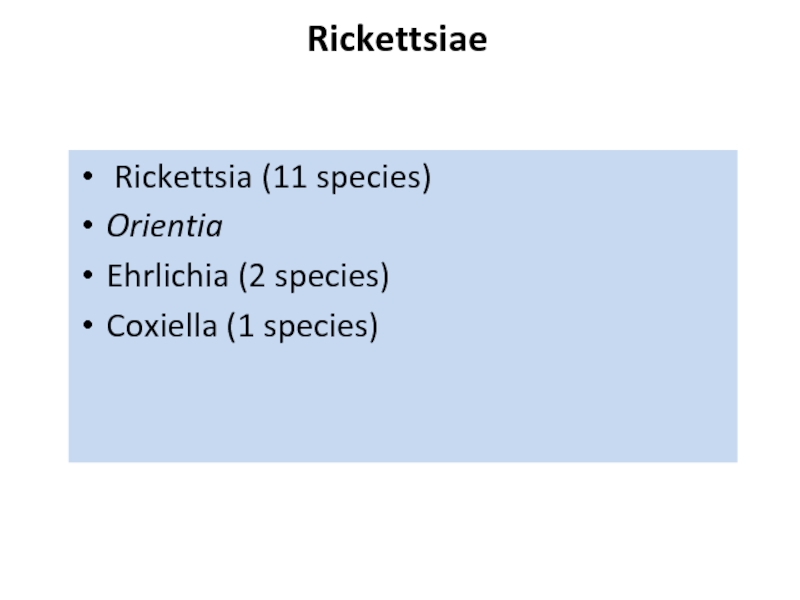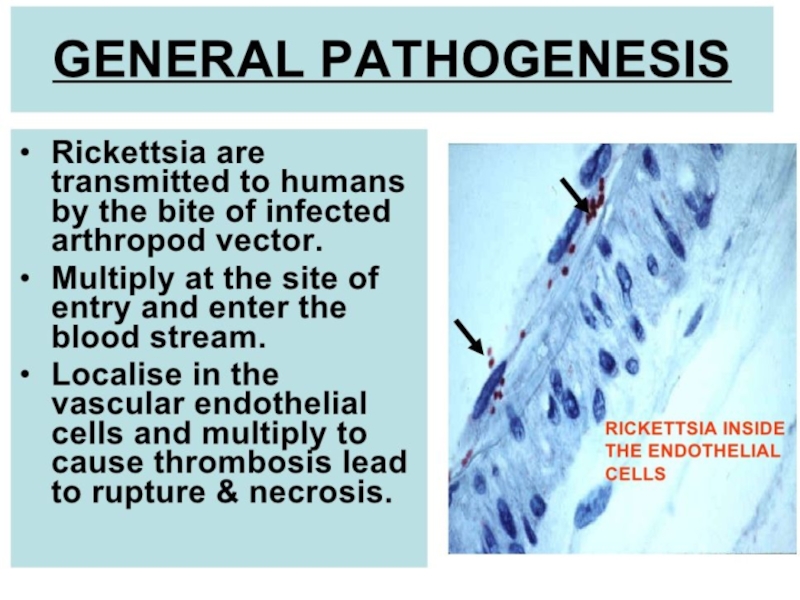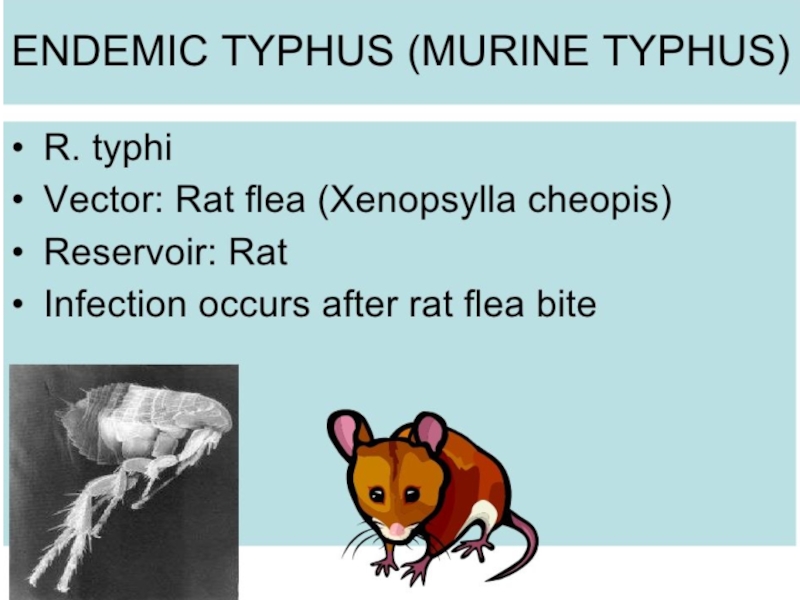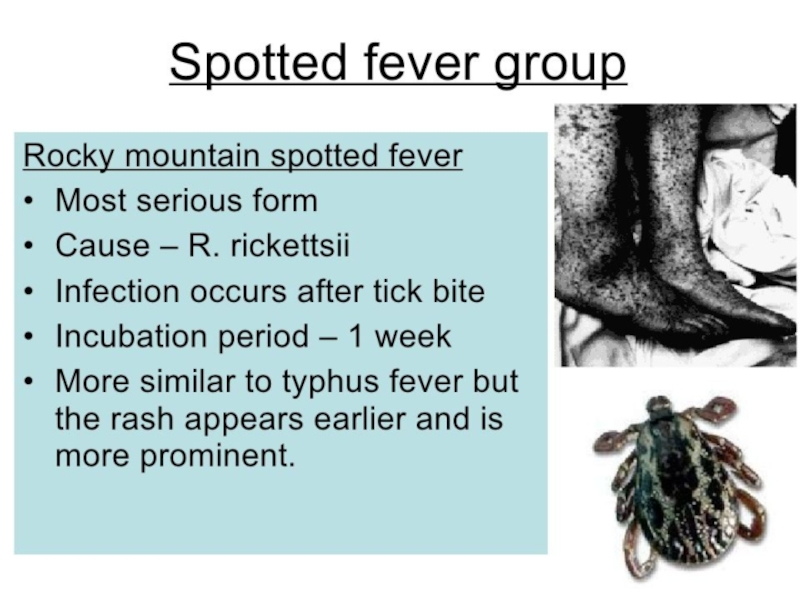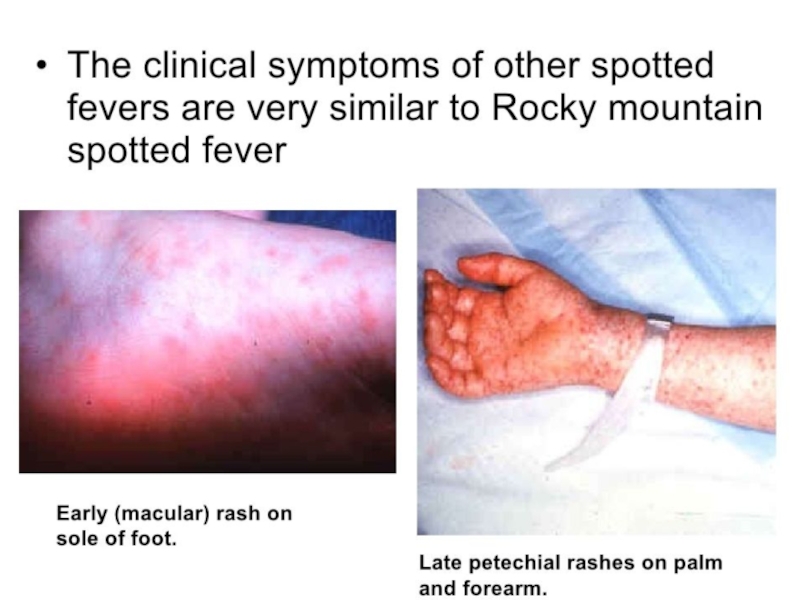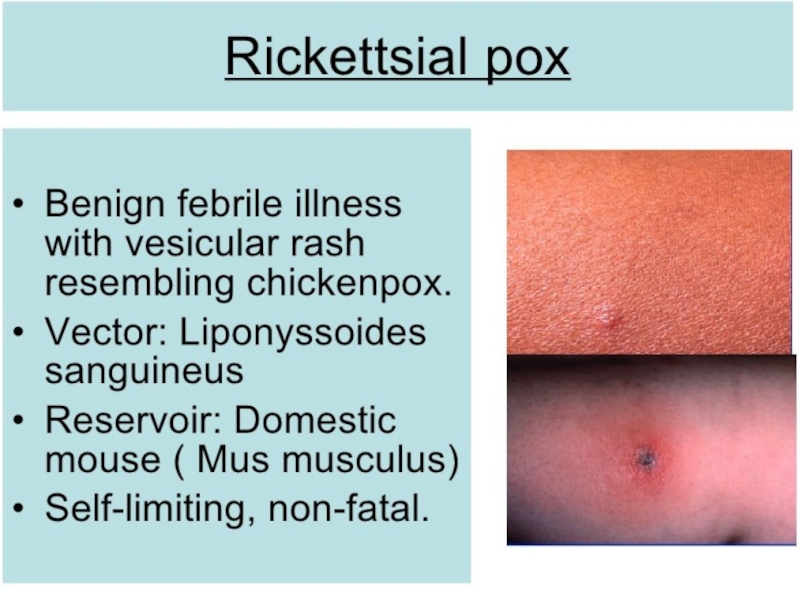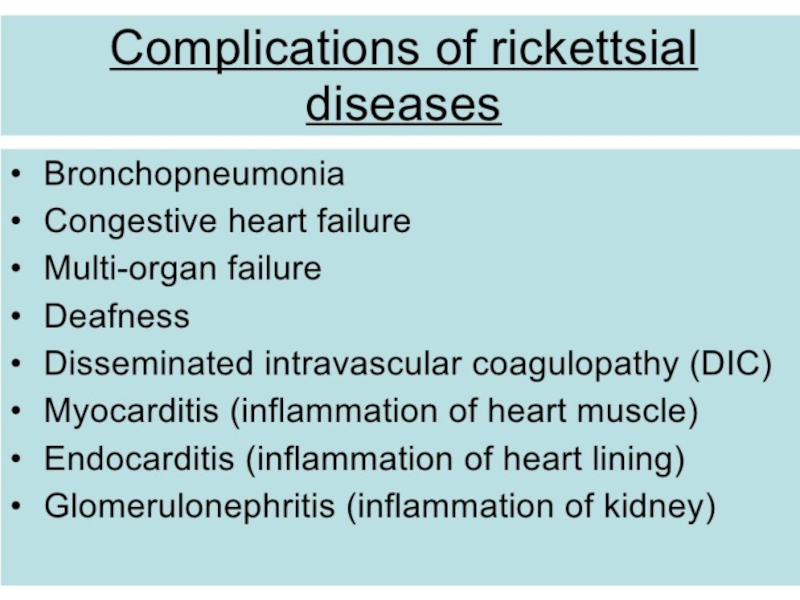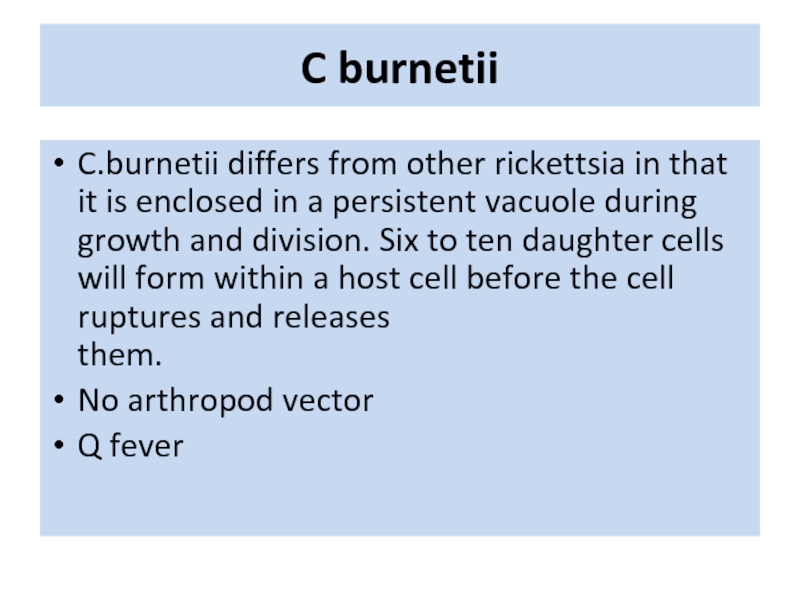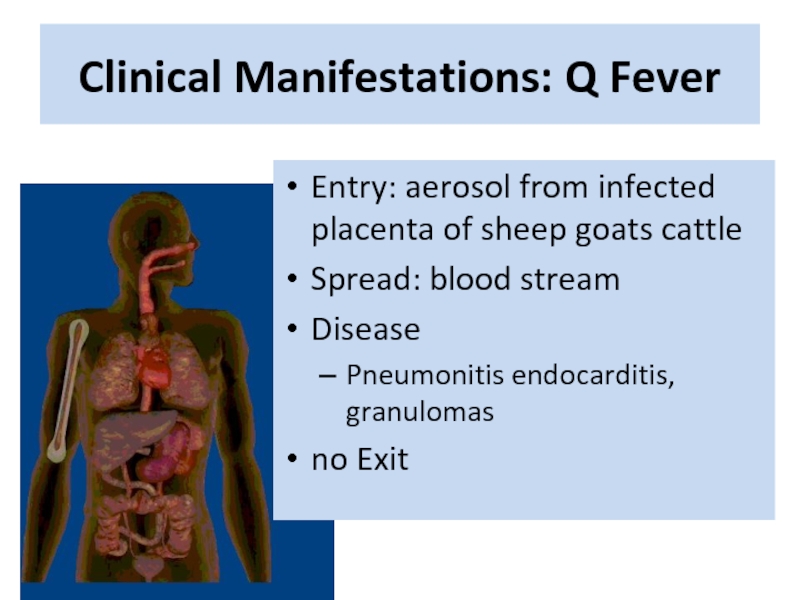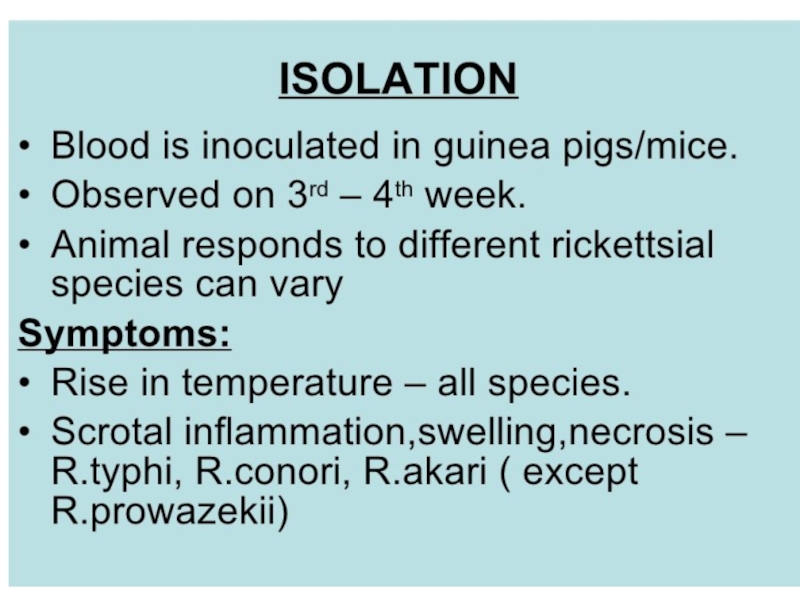- Главная
- Разное
- Дизайн
- Бизнес и предпринимательство
- Аналитика
- Образование
- Развлечения
- Красота и здоровье
- Финансы
- Государство
- Путешествия
- Спорт
- Недвижимость
- Армия
- Графика
- Культурология
- Еда и кулинария
- Лингвистика
- Английский язык
- Астрономия
- Алгебра
- Биология
- География
- Детские презентации
- Информатика
- История
- Литература
- Маркетинг
- Математика
- Медицина
- Менеджмент
- Музыка
- МХК
- Немецкий язык
- ОБЖ
- Обществознание
- Окружающий мир
- Педагогика
- Русский язык
- Технология
- Физика
- Философия
- Химия
- Шаблоны, картинки для презентаций
- Экология
- Экономика
- Юриспруденция
Rickettsial infection презентация
Содержание
- 1. Rickettsial infection
- 2. Structure Clinical Manifestations Pathogenesis Epidemiology Diagnosis Control Overview
- 3. Definition of rickettsial disease Rickettsial disease in
- 5. Epidemiology In 1993, WHO reported that, these
- 6. For India, the reported numbers are an
- 7. TRANSMISSION Vectors: fleas, lice, mites and ticks.
- 8. Rickettsiae
- 9. Rickettsia (11 species) Orientia Ehrlichia (2 species) Coxiella (1 species) Rickettsiae
- 19. C burnetii C.burnetii differs from other rickettsia
- 20. Clinical Manifestations: Q Fever Entry: aerosol from
Слайд 1RICKETTSIAL INFECTION
Prepared by Professor Kutmanova A.Z.
Lecture
Department of Special Clinical Disciplines
Слайд 3Definition of rickettsial disease
Rickettsial disease in humans (spotted fevers, typhus or
scrub typhus) is caused by a number of related species of intracellular bacteria of the genus Rickettsia that have blood-feeding arthropod vectors.
Each species is associated with a different spectrum of clinical features, geographical distribution, insect vector (tick, louse, flea, mite or chigger), seasonal incidence and other epidemiological factors.
Each species is associated with a different spectrum of clinical features, geographical distribution, insect vector (tick, louse, flea, mite or chigger), seasonal incidence and other epidemiological factors.
Слайд 4
The name Rickettsiaceae honors Haword
Taylor Ricketts for his brilliant experiments. Ricketts, as well as another famous rickettsiologist, Von Prowazek, died of rickettsia during their study period
History
Слайд 5Epidemiology
In 1993, WHO reported that, these are major causes of febrile
illnesses throughout the Asia-Pacific region, also present in several parts of the Indian subcontinent.
From India in 2010 reported that 45.6% had spotted fever group and 30.7% scrub typhus & untreated cases can have fatality rates as high as 30-35%.
Слайд 6For India, the reported numbers are an underestimate due to lack
of community based data and non-availability of confirmatory laboratory tests.
Rickettsial disease in India has been documented from Jammu, Kashmir, Himachal Pradesh, Uttaranchal, Rajasthan, Assam, West Bengal, Maharashtra, Kerala and Tamil Nadu
Rickettsial disease in India has been documented from Jammu, Kashmir, Himachal Pradesh, Uttaranchal, Rajasthan, Assam, West Bengal, Maharashtra, Kerala and Tamil Nadu
Слайд 7TRANSMISSION
Vectors: fleas, lice, mites and ticks.
The specific vectors that transmit each
rickettsial pathogen.
Transmission by bites from these vectors or by inoculating infectious fluids or feces from the ectoparasites into the skin.
Inhaling or inoculating conjunctiva with infectious material.
Transmission of some rickettsial diseases after transfusion or organ transplantation is rare but has been reported.
Transmission by bites from these vectors or by inoculating infectious fluids or feces from the ectoparasites into the skin.
Inhaling or inoculating conjunctiva with infectious material.
Transmission of some rickettsial diseases after transfusion or organ transplantation is rare but has been reported.
Слайд 19C burnetii
C.burnetii differs from other rickettsia in that it is enclosed
in a persistent vacuole during growth and division. Six to ten daughter cells will form within a host cell before the cell ruptures and releases
them.
No arthropod vector
Q fever
No arthropod vector
Q fever
Слайд 20Clinical Manifestations: Q Fever
Entry: aerosol from infected placenta of sheep goats
cattle
Spread: blood stream
Disease
Pneumonitis endocarditis, granulomas
no Exit
Spread: blood stream
Disease
Pneumonitis endocarditis, granulomas
no Exit
